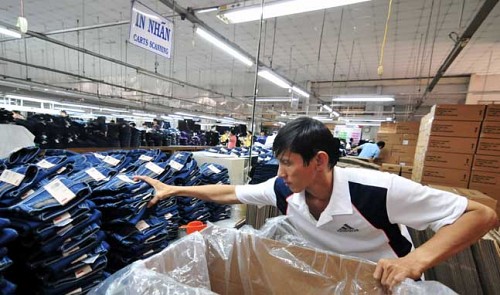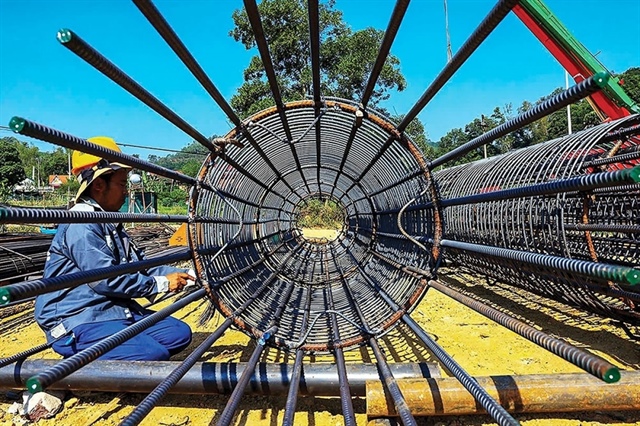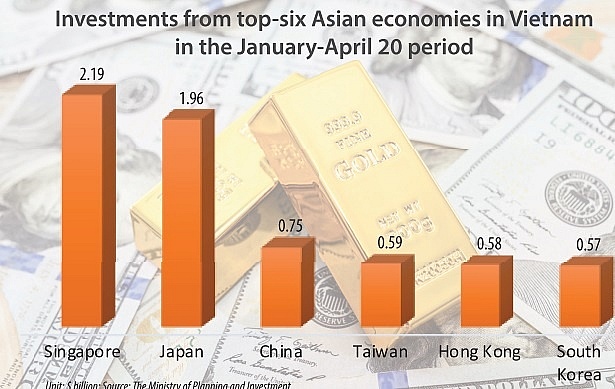Vietnam economic hubs post competitiveness growth; pessimism still high
Vietnam economic hubs post competitiveness growth; pessimism still high
All of the Vietnamese economic hubs have managed to jump to higher places in the 2013 Provincial Competitiveness Index, which measures their economic governance for business development, but pessimism remains high when it comes to business prospects for the next two years.

The coastal city of Da Nang rose back to first place with 66.45 points, up from 12th position in 2012, according to the 2013 PCI report released by the Vietnam Chamber of Commerce and Industry (VCCI) on Thursday.
The central economic hub had ranked above all provinces and cities for the three years between 2008 and 2010 before beginning a steady decline in 2011.
Ho Chi Minh City placed at the bottom of the top ten, jumping three places from its 2012 ranking, while northern hub Hanoi was ranked 33rd, 18 notches higher than the previous year.
Most of those at the bottom are northern mountainous provinces, including Lang Son, Yen Bai, Cao Bang, Hoa Binh, and finally, Tuyen Quang.
The 2013 PCI report, administered by the VCCI with support from the U.S. Agency for International Development, measures the quality of economic governance across 63 provinces in Vietnam.
It covers voices from 8,093 domestic non-state enterprises countrywide, and opinions of 1,609 foreign-invested enterprises operating in the country.
The report is aimed at providing objective indicators of the quality of economic governance in areas that are crucial for investment and growth.
“These indicators shed light on where reforms are needed and provide clear signals on how to improve regulatory quality investments,” the report reads.
Even though several localities managed to improve their rankings, the report also reflects some negative points.
Both foreign and domestic firms posted declining growth rates in 2013, with only 6.4 percent of the private, domestic firms increasing their investments, and only 6.2 percent of operations adding labor in the past year, according to the report.
As for the foreign firms, 33.4 percent added employees but only 5.1 percent increased their investments, which researchers say “remain small by international standards.”
Businesses are also pessimistic about the outlook for the next two years.
Optimistic respondents have dipped considerably in recent years, declining from 76 percent in 2006, before Vietnam became a World Trade Organization member, to historic lows of 33 percent for local firms, and 28 percent for foreign businesses.
Foreign investment survey
The 2013 PCI report also includes findings from the 4th Annual Survey of FDI in Vietnam, which covers a highly representative selection of 1,609 businesses from 49 countries whose operations are located in the 13 most economically developed provinces.
The survey found that only 27 percent of FDI enterprises intend to expand their business over the next two years, the lowest level of business confidence and performance since the first FDI survey report.
Asked to compare Vietnam to the other countries considered, the FDI businesses noted that Vietnam fared well on: expropriation risk (64% preferred Vietnam); policy stability (60%); influence of foreign firms over policies that affect their business (59%); and reasonably well on the burden of tax rates (52%) relative to competitors.
Meanwhile, the FDI enterprises evaluate Vietnam to be significantly less attractive when it comes to corruption, regulatory burdens, quality of public services (such as education and health care), and the quality and reliability of infrastructure.
Specifically, investors regard Vietnam roughly the same as its neighbors Cambodia and Laos in terms of infrastructure.
tuoitrenews



















